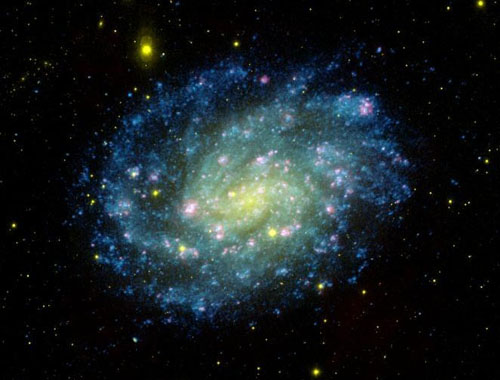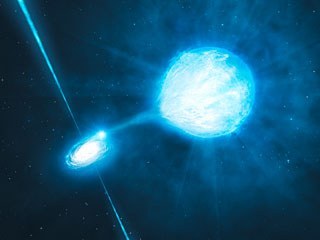The European Southern Observatory’s Very Large Telescope (VLT) has helped an international team of astronomers to detect a stellar mass black hole that lies at a much greater distance from Earth than any observed before. The black hole is in the spiral galaxy NGC 300, about six million light years away in the constellation Sculptor.

Paul Crowther and Vik Dhillon, of the University of Sheffield, UK, Robin Barnard and Simon Clark of the The Open University, Milton Keynes, UK, and Stefania Carpano and Andy Pollock of ESAC, in Madrid, Spain report the black hole which has a mass of about twenty times that of the Sun in the Monthly Notices of the Royal Astronomical Society.
The stellar-mass black holes found in our Milky Way galaxy commonly weigh up to ten times the mass of the Sun. The newly discovered black hole is not only the most distant, but the second most massive stellar-mass black hole ever found. It is also entwined with a star that will soon become a black hole itself.
Lead author Crowther, explains: “This is the most distant stellar-mass black hole ever weighed, and it’s the first one we’ve seen outside our own galactic neighbourhood, the Local Group. The black hole’s curious partner is a Wolf-Rayet star, which also has a mass of about twenty times as much as the Sun. Wolf-Rayet stars are near the end of their lives and expel most of their outer layers into their surroundings before exploding as supernovae, with their cores imploding to form black holes.

In less than a million years, a blink of the eye cosmologically speaking, the Wolf-Rayet star will explode as a supernova and its remnants collapse into a black hole. Only one other system of this type has previously been seen, but other systems comprising a black hole and a companion star are not unknown to astronomy. The existence of such systems hints at an underlying galactic chemistry. Astronomers believe that a higher concentration of heavy chemical elements influences how a massive star evolves, increasing how much matter it sheds, resulting in a smaller black hole when the remnant finally collapses.
LINKS
Monthly Notices Royal Astronom Soc, 2010, in press
http://www.eso.org/public/archives/releases/sciencepapers/eso1004/eso1004.pdf
Paul Crowther
http://pacrowther.staff.shef.ac.uk/main.html